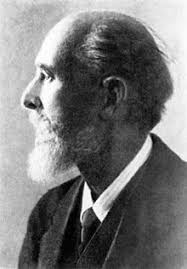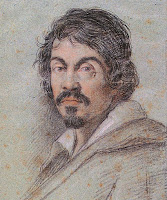Raising the Veil on Harems An inside look at these private spaces inhabited by women in the 16 th , 19 th and 20 th centuries, through art. By Preeti Philip Odalisque in Red Trousers- Henri Matisse,1924-25. Oil on canvas, 50 x 61 cms. Musee de l’ Orangerie, Paris The richest empire in the world, Mughal India- said to be blessed by the divine light of the sun, was home to some of the most powerful women who resided in the royal harems of the empire, called the Zenana. During the Mughal era (16 th -18 th century) accomplished and cultured women were highly prized and held a high status in these royal harems. Reputed as being extremely well educated and refined, they were astute businesswomen who owned trading ships, had a keen eye for architecture, commissioned buildings, wrote biographies and poetry, travelled and were personally wealthy beyond compare. The walls of the harem housed generations of women, elderly matrons, y
Posts
- Get link
- Other Apps

The Four Realities of the Moulin de La Galette By Preeti Philip Pierre- Auguste Renoir ( 1890-1915) Dance at the Moulin de la Galette (1870) Location Musee d’Orsay, Paris . (Image source: Google Arts and Culture) The setting is a beautiful Sunday afternoon, rosy cheeked young girls dance with handsome young men as the warm afternoon sun filters through the leaves. Renoir’s loose brushstrokes catch the fleeting play of light that dot the entire canvas to give this impressionist masterpiece a feeling of vibrancy. The crowd is mainly working-class people, many of whom were known to him; fellow artists, writers and models. We can almost hear the flirtatious laughter and the clinking of glasses; the painting is a snapshot of Parisian life in the 1870’s. Undoubtedly, Auguste Renoir was an artistic giant and the ‘Moulin de la Galette’ his most celebrated work. One of the leading artists of the impressionist movement
The Imperial Easter Eggs
- Get link
- Other Apps

Peter Carl Faberge` I t’s almost one a.m. on a chilly night before Easter. The year is 1885. In his workshop on Bolshya Morskaya a fashionable street in St. Petersburg, Peter Carl Faberge` is giving the final finishing touches to a beautiful golden Easter egg. This is no ordinary Easter egg and Faberge` is no ordinary jeweler. He's recently been titled ‘Master Jeweler’ and been awarded a gold medal by Tsar Alexander III. Faberge` had been commissioned by him to make an Easter egg for his wife Tsarina Maria Feodorovna. The Tsar wanted to present the egg to his wife on Easter and also celebrate their twentieth wedding anniversary The Hen Egg The next morning the Tsar presents the egg to his wife. The egg which came to be known as the ‘Hen Egg’, is crafted from a foundation of gold. Its opaque white enamelled ‘shell’ opens to reveal a matt yellow yolk made entirely of gold. The yolk in turn opens to reveal a golden hen that’s resting on a bed of su
Celebrating Imperfection- Kintsugi
- Get link
- Other Apps

The year is 1460, little Akira sits on a mat in his father’s workshop in Kyoto. It’s way past his bedtime, but he just can’t tear himself away from the beautiful ceramic bowl that has caught his attention the whole evening. He gazes at the beautiful blues and marvels at the many shades of green he glimpses in the glow of the lantern light. His father gently requests him to go to sleep and just as he gets up, the bowl slips from his hands and breaks. Tears well up in Akira's eyes, he can’t believe that this beautiful bowl, which was so flawless has now broken. He falls to the ground next to the shattered pieces and begins to cry. When his father sees what’s happened, he picks him up and tells him not to be upset and that he’ll repair the bowl in such a way that it’ll be even more beautiful than before. Akira’s not convinced however he decides to believe his father. His father is after all the chief craftsman to the mighty Shogun Ashikaga Yoshimasa. The next morning as
Supper at Emmaus
- Get link
- Other Apps

In the middle of the afternoon, a man runs frantically on the shore under the fierce summer sun. He is desperate to get to Rome and is trying to catch a glimpse of the boat that has left with all his belongings. He is a murderer, a fugitive, has an infected sword wound, and a raging fever, he is also the most powerful and influential Italian painter of that time. Michelangelo Merisi da Caravaggio died on the 18 th of July 1610 at the young age of 38, alone and penniless on a hospital bed in Ponto Ercole. Caravaggio was born in Milan in 1571. He moved to Rome in his early twenties, arrogant and rebellious, Caravaggio was a violent man in a violent world. Rome in the late sixteenth and early seventeenth century was a difficult place to say the least. Thousands of artists flocked to the city in search of work. The Vatican was a magnet for artists, and each one was competing for powerful patrons in the church .There were no rules and hostilities ran deep. It’s against thi